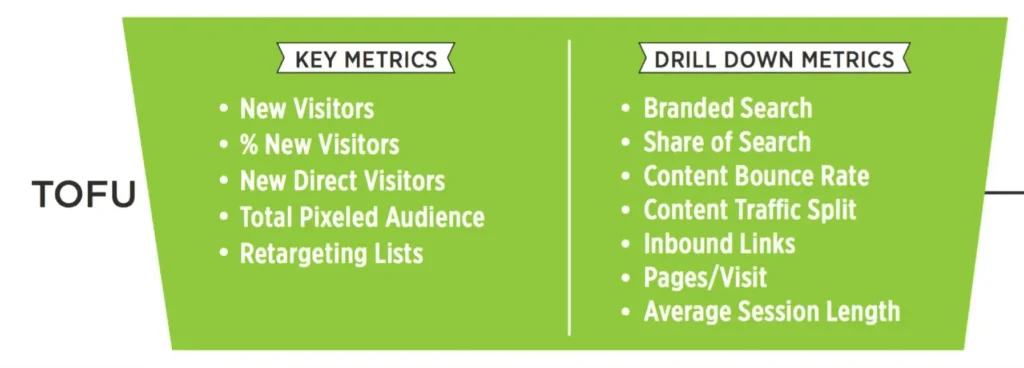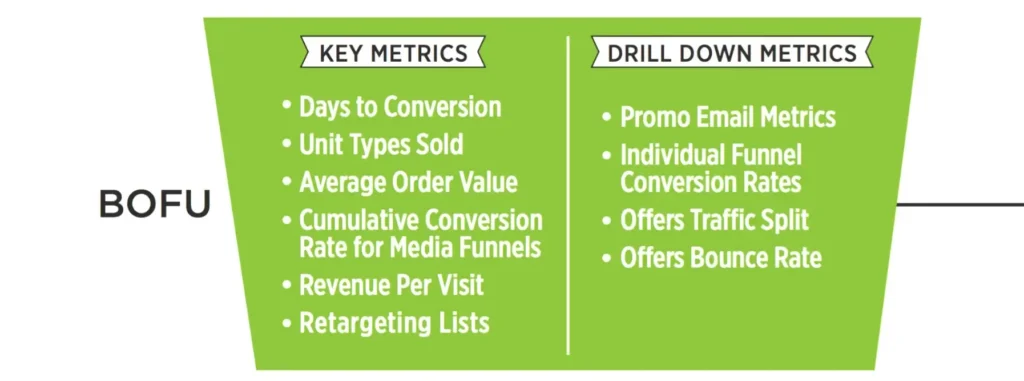TOFU (Top of Funnel)
What’s your goal for this stage? New visitors.

Direct new visitors is the number of people who are typing your website URL directly into Google. It can measure the effectiveness of online and offline advertising: If you’ve been running awareness ads, you should see spikes from people trying to learn more about you. If you have billboards that include your URL, you should see a spike in the geo-areas surrounding the billboard as they visit your site.
MOFU (Middle of Funnel)
Your goal at this stage? Converting new visitors into leads.

Your guiding question when deciding whether a metric is right for the middle of the funnel is this: Does this metric give me insight into how well I’m getting visitors to commit?
“Commitment” can be definied as:
- People subscribing
- People filling out a webform
- People following you on social media
It’s about people giving you permission to reach out to them and offer more value.
A good example of a MOFU metric: CTA clicks.
If you have a blog post with a banner to learn more about one of your products. You need to know how many clicks that banner is getting and what percentage of your blog visitors are clicking so you can evaluate how well your content is converting visitors into leads.
BOFU (Bottom of Funnel)
Your goal? Converting prospects into customers.

Your guiding question when choosing metrics for this stage: Does this metric give me insight into how well prospects convert into customers? This stage is especially important because, once someone buys something from you—even something small and inexpensive—the likelihood that they’ll buy again increases 10-fold, and their willingness to invest in the relationship significantly increases.
An good example of a BOFU metric: conversion percentage. How many people clicked or purchased from a brand communication? This tells you which offers are working and what kind of offers you should make to new customers.
Retention & Monetization (After Conversion)
Your goal for this stage? Customer satisfaction.
You want to increase membership, traffic ROI, retention, and customer lifetime value. The guiding question when looking at post-conversion metrics: Does this metric give me insight into how satisfied our customers are? You’re looking for metrics that describe real results from using your product. This data isn’t waiting for you on Google, so it’s harder to come by, but satisfied customers are usually willing to share them. Here at IDM, we look for positive reviews from people in our membership area. That tells us how well we’re helping people reach their goals.

This report tracks how many people we’re adding to a subscription product, how many people we’re losing, and how we’re losing them. These metrics tell us how healthy the product is, and when they’re combined with other reports, we can see the things we do that drive cancellations or boost membership. This information is critical for a membership product because member retention drives profits.
References:
Digital Marketer. (n.d.). The Ultimate Guide to Digital Marketing. Course Hero. Retrieved January 25, 2022, from https://www.coursehero.com/file/94978188/Ultimate-Guide-to-Digital-Marketingpdf/
